This article was co-authored by Alan O. Khadavi, MD, FACAAI. Dr. Alan O. Khadavi is a Board Certified Allergist and a Pediatric Allergy Specialist based in Los Angeles, California. He holds a BS in biochemistry from the State University of New York (SUNY) at Stony Brook and an MD from the State University of New York Health Science Center at Brooklyn. Dr. Khadavi completed his pediatric residency at Schneider Children’s Hospital in New York, and then went on to complete his allergy and immunology fellowship and pediatric residency at Long Island College Hospital. He is board certified in adult and pediatric allergy/immunology. Dr. Khadavi is a Diplomate of the American Board of Allergy and Immunology, a Fellow of the American College of Allergy, Asthma & Immunology (ACAAI), and a member of the American Academy of Allergy, Asthma & Immunology (AAAAI). Dr. Khadavi's honors include Castle Connolly’s list of Top Doctors 2013-2020, and Patient Choice Awards "Most Compassionate Doctor" in 2013 & 2014.
There are 18 references cited in this article, which can be found at the bottom of the page.
wikiHow marks an article as reader-approved once it receives enough positive feedback. In this case, 87% of readers who voted found the article helpful, earning it our reader-approved status.
This article has been viewed 443,586 times.
Many people experience headaches, but if your headache feels like pressure and tenderness behind your forehead, eyes, or cheeks, you probably have a sinus headache. Sinuses are spaces within the bones of your skull filled with air that they purify and humidify. Your skull contains four pairs of sinuses that can become inflamed or congested, causing sinus headaches.[1] If you determine that the source of your headache is sinus pressure and not a migraine, you can reduce the inflammation and drain your sinuses using home treatment, over-the-counter medication, or professional medical treatments.
Steps
Using Home Treatments
-
1Breathe in moist air. Use a steam vaporizer or cool-mist humidifier to reduce sinus inflammation. You can also create moist air by filling a basin of hot water, bending over it (taking care not to get too close) and covering your head with a towel. Breathe in the steam. Or, you can take a hot shower, breathing in the steam. Try to breathe in moist air two to four times a day in 10- to 20-minute intervals.[2]
- Your home humidity level should be around 45%. Below 30% is too dry, and over 50% is too high. Use a tool called a hygrometer to measure the levels.[3]
-
2Use compresses. Alternating between applying hot and cold compresses. Place a hot compress across the sinuses for three minutes, and then a cold compress for 30 seconds. You can repeat this procedure three times per treatment and between two and six times a day.[4]
- You can also run hot or cold water over a towel, wring it out, and apply it to your face to get the same effect as a compress.
Advertisement -
3Stay hydrated. Be sure to drink plenty of fluids, which can help thin out the mucus in your sinuses. This will make it easier to drain and can help with overall hydration.[5] [6] According to studies, men should try to drink 13 cups of water a day, while women should drink around nine.[7]
- Some people find that drinking hot fluids can help. Enjoy your favorite cup of hot tea or drink broth to thin out the mucus.
-
4Use a saline nasal spray.[8] Follow the packaged instructions and use it up to 6 times a day.[9] Saline nasal sprays can keep the cilia in your nose healthy. This will push the mucus out of your sinuses and relieve the pressure.[10] It also moistens nasal passages to remove dried secretions which helps drain the mucus. Nasal sprays might help remove pollen, which can improve allergies that may cause sinus headaches.[11]
- You can make your own saline solution by mixing 2 – 3 teaspoons of kosher salt to 1 cup of distilled, sterile, or previously boiled water. Mix and add one teaspoon of baking soda. Use it with a bulb syringe or dropper to insert into your nasal passages. You can also use this up to six times a day.[12]
-
5Use a neti pot. Create a saline solution and place it in the neti pot. Stand over a sink and lean your head forward. While leaning over the sink, tilt your head to one side and pour the solution directly into one nostril, taking care to aim the stream at the back of your head. The solution will go into the nasal cavity and down the back of the throat. Gently blow your nose and spit out the drainage. Repeat with the other nostril. Using a neti pot can reduce sinus inflammation and help to drain the mucus. It will also help clear sinuses of irritants and allergens.[13]
- Water used in a neti pot must be sterilized, either by boiling or by distillation.
Using Medications
-
1Take antihistamines.[14] These medications block histamine, a substance your body makes as a response to allergens. Histamine is responsible for the symptoms of allergic rhinitis (sneezing, itchy eyes, and itchy, runny nose). Several antihistamines can be purchased over-the-counter and are taken once a day. Second-generation antihistamines, like loratadine, fexofenadine, and cetirizine are all designed to minimize drowsiness, a problem with first- generation antihistamines (like diphenhydramine or chlorpheniramine).[15]
- If seasonal allergies are the cause of your sinus headaches, try taking intranasal corticosteroids. These over-the-counter medications are the most effective at treating the allergies. Take fluticasone or triamcinolone spray daily, using one to two sprays in each nostril.[16]
-
2Use nasal decongestants. You can take these medications topically (as nose sprays like oxymetazoline) or orally (as pseudoephedrine) to relieve nasal congestion. Topical decongestants can be used every 12 hours, but not for more than three to five days or you may develop rebound nasal congestion from decongestant overuse. Oral decongestants can be taken once or twice a day. These can be combined with antihistamines like loratadine, fexofenadine, and cetirizine.
- Because it a major ingredient of methamphetamine, or speed, pseudoephedrine, alone and in combination with antihistamines, is highly regulated and kept behind the pharmacy counter to prevent stockpiling by methamphetamine manufacturers.[17]
-
3Take pain relievers. You can take aspirin, acetaminophen, ibuprofen, or naproxen for short-term relief of sinus headaches.[18] Even though over-the-counter pain relievers will not treat the underlying cause of a sinus headache, they can help reduce or remove the head pain associated with sinus trouble.
- Be sure to take them as directed on the packaging or by your doctor.
-
4Take prescription medications. Your doctor may prescribe antibiotics to treat a bacterial infection that can accompany or cause sinus headaches. Symptoms of a bacterial sinus infection include a sore throat, yellow or green discharge from your nose, nasal congestion, fever, and fatigue. Acute bacterial sinusitis is treated with 10 to 14 days of antibiotics while chronic bacterial sinusitis needs three to four weeks of antibiotic treatment.
- Your doctor may also prescribe triptans, medications used to treat migraines. Research has shown that the majority of patients with sinus headaches had significant improvement in symptoms with triptans. Examples of triptans include sumatriptan, rizatriptan, zolmitriptan, almotriptan, naratriptan, rizatriptan, and eletriptan.
-
5Consider getting allergy injections (immunotherapy). Your doctor may recommend allergy injections if you don't respond well to medication, have significant side effects from medication, or have allergen exposure that's unavoidable.[19] An allergy specialist (allergist) will typically administer the injections.
-
6Find out about surgical options. You'll meet with an Ear, Nose, and Throat (ENT) specialist who can determine if you need surgery to prevent sinus headaches. Nasal polyps or bone spurs that might cause sinus infections can be surgically removed or your sinuses can be opened.
- For example, balloon rhinoplasty involves inserting a balloon into the nasal cavity and inflating it to enlarge the sinus cavity.
Using Alternative Therapies
-
1Take a dietary supplement. Research is being done to determine the extent of dietary supplements' impact on sinus headaches. The following supplements may prevent or treat sinus headaches:
- Bromelain is an enzyme produced by pineapples, which may help reduce sinus inflammation. Do not take bromelain with blood-thinners since the supplement can increase your risk of bleeding. You should also avoid bromelain if you're taking angiotensin converting enzyme (ACE) inhibitors, a class of medications commonly used to treat high blood pressure (hypertension). In the due this case, Bromelain can increase the chances of a precipitous drop in blood pressure (hypotension).
- Quercetin is a plant pigment responsible for producing vibrant colors in fruits and vegetables. It is thought to act as a natural antihistamine, but more studies are needed in humans to see if it behaves like an antihistamine.
- Lactobacillus is a probiotic bacteria that your body needs for a healthy digestive system and effective immune system. The supplement decreases both the chances of developing allergies and gastrointestinal side effects such as diarrhea, gas and abdominal pain related to using antibiotics.
-
2Try herbal remedies. There are many herbs that may reduce the chances of getting sinus headaches. They do this by preventing or treating a cold, boosting the immune system, or reducing sinus inflammation. Studies have shown that the herbal supplement, Sinupret, can decrease the symptoms of sinus inflammation. It's believed that it works by thinning mucus, allowing for improved sinus drainage. Other herbs that have traditionally been used to treat sinus headaches include:
- Chinese skullcap. Make a tea by pouring 1 cup of boiling water over 1 to 2 teaspoons of dried leaves. Cover and steep the mixture for 10 to 15 minutes. Drink two to three cups a day to feel sinus relief.
- Feverfew. Make a tea by pouring 1 cup of boiling water over 2 to 3 teaspoons of freshly chopped feverfew leaves. Steep the mixture for 15 minutes, strain it, and drink it up to three times a day.
- Willow bark. Make a tea by combining one teaspoon of chopped or powdered willow bark with 8 – 10 ounces of water. Bring the mixture to a boil and simmer for five minutes. Drink the tea three to four times a day.
-
3Apply essential oils to your temples. Studies have shown that certain essential oils applied to your temples (next to your eyes on the side of your face), can relieve sinus and tension headaches. Create a 10% solution of peppermint or eucalyptus oil in rubbing alcohol and dab it on your temples using a sponge.[20] To create the solution, try mixing three tablespoons of rubbing alcohol with one teaspoon of peppermint or eucalyptus oil.
- This mixture can relax your muscles and reduce your sensitivity to the sinus headaches, according to research.[21]
-
4Consider homeopathy. Homeopathy is a belief and alternative therapy that uses small amounts of natural substances that are meant to cause the body to heal itself. Chronic sinus sufferers usually use homeopathy, with studies showing the majority of patients reporting improved symptoms after two weeks. Homeopathy has a large number of treatments targeting sinus congestion and headache including
- Arsenic album, Belladonna, hepar sulphuricum, iris versicolor, kali bichromicum, mercurius, natrum muriaticum, pulsatilla, silicea, and spigelia.
-
5Try acupuncture. This is an ancient Chinese discipline that applies thin needles to acupuncture points. It is believed that these points can correct imbalances in your body's energies.[22] To treat your sinus headache, an acupuncture practitioner will treat the sinus inflammation (or dampness) by strengthening points along your spleen and stomach.
- You shouldn't try acupuncture if you're pregnant, have a bleeding disorder, or have a pacemaker.[23]
-
6See a chiropractor. Your chiropractor may be able to help your sinus headache by adjusting and manipulating misalignments within your body, although there are no trials that support this claim. In sinus adjustment, the practitioner targets the bones and the mucous membranes lining the cavities of sinuses.
- Manipulation adjusts joints to correct misalignments that stimulate the nervous system. This may restore function to affected areas of the body.
Learning About Sinus Headaches
-
1Distinguish between migraines and sinus headaches. According to several studies, the majority of people diagnosed with a sinus headache had undiagnosed migraines.[24] Fortunately, there are several symptoms that may help distinguish sinus headaches from migraines. For example:[25]
- Migraines usually worsen with noise or bright light
- Migraines are accompanied by nausea and vomiting
- Migraine pain can be felt anywhere in your head and into your neck[26]
- Migraines won't have thick, nasal discharge or loss of smell
-
2Recognize the symptoms and causes. The primary cause of a sinus headache is inflammation of the mucus membranes lining your sinuses. The inflammation prevents your sinuses from secreting mucus. This causes pressure to build up and causes pain.[27] Sinus inflammation can be caused by any infection, allergies, infections of the upper teeth, or, rarely, tumors (benign or malignant).[28] Symptoms of sinus headaches include:[29]
- Pressure and tenderness behind the forehead, cheeks, or around the eyes
- Pain that worsens with bending forward
- Pain in the upper teeth
- Pain that is more intense first thing in the morning
- Pain that ranges from mild to severe and can be unilateral (on one side) or bilateral (on both sides)
-
3Check yourself for risk factors. Several factors can make you more prone to getting sinus headaches. These factors may include:[30]
- A history of allergies or asthma
- Persistent colds, also known as upper respiratory infections
- Ear infections
- Enlarged tonsils or adenoids
- Nasal polyps
- Nasal deformities, such as a deviated septum
- Cleft palate
- Weakened immune system
- Prior sinus surgery
- Climbing or flying to high altitudes
- Traveling in an airplane while you have an upper respiratory infection
- Tooth abscess or infection
- Frequent swimming or diving
-
4Know when to seek medical help. If your headaches happen more than 15 days a month, or you frequently use nonprescription pain medication, you should see your doctor. You should also consider seeing your doctor if the pain medication doesn't help a severe headache or the headaches interfere with daily life (for example, you often miss school or work because of headaches).[31] Get emergency medical help if you have a sinus headache and the following symptoms:
- Sudden and severe headache that lasts or increases in intensity over 24 hours.
- A sudden severe headache that is described as “the worst ever,” even if you are prone to headaches.
- Chronic or severe headache that commences after age 50.
- Fever, stiff neck, nausea, and vomiting (these symptoms may be suspicious for meningitis, a life-threatening bacterial infection).
- Memory loss, confusion, loss of balance, change in speech or vision, or loss of strength in or numbness or tingling in any one of your limbs (these symptoms may be suspicious for a stroke).
- Several headaches in one eye, accompanied by redness of the eye (these symptoms may be suspicious for acute angle closure glaucoma).
- A new or change in headache pattern.
- If you have experienced recent head trauma.
-
5Get tested. Your doctor will take a complete medical history and perform a physical exam to diagnose a sinus headache. During the exam, your doctor will touch your face to look for tenderness or swelling. Your nose will be checked for signs of inflammation, congestion, or nasal discharge. Your doctor may also order imaging studies such as X-ray, computed tomography (CT) scan, or magnetic resonance imaging (MRI) scan. If your physician thinks allergies may be contributing to your symptoms, you may be referred to an allergist for more testing.
- Occasionally, a referral to an ear, nose, and throat (ENT) specialist is needed. The ENT will use a fiber optic scope to visualize the sinuses and make a diagnosis.
Expert Q&A
Did you know you can get expert answers for this article?
Unlock expert answers by supporting wikiHow
-
QuestionWhat causes a sinus headache?
 Alan O. Khadavi, MD, FACAAIDr. Alan O. Khadavi is a Board Certified Allergist and a Pediatric Allergy Specialist based in Los Angeles, California. He holds a BS in biochemistry from the State University of New York (SUNY) at Stony Brook and an MD from the State University of New York Health Science Center at Brooklyn. Dr. Khadavi completed his pediatric residency at Schneider Children’s Hospital in New York, and then went on to complete his allergy and immunology fellowship and pediatric residency at Long Island College Hospital. He is board certified in adult and pediatric allergy/immunology. Dr. Khadavi is a Diplomate of the American Board of Allergy and Immunology, a Fellow of the American College of Allergy, Asthma & Immunology (ACAAI), and a member of the American Academy of Allergy, Asthma & Immunology (AAAAI). Dr. Khadavi's honors include Castle Connolly’s list of Top Doctors 2013-2020, and Patient Choice Awards "Most Compassionate Doctor" in 2013 & 2014.
Alan O. Khadavi, MD, FACAAIDr. Alan O. Khadavi is a Board Certified Allergist and a Pediatric Allergy Specialist based in Los Angeles, California. He holds a BS in biochemistry from the State University of New York (SUNY) at Stony Brook and an MD from the State University of New York Health Science Center at Brooklyn. Dr. Khadavi completed his pediatric residency at Schneider Children’s Hospital in New York, and then went on to complete his allergy and immunology fellowship and pediatric residency at Long Island College Hospital. He is board certified in adult and pediatric allergy/immunology. Dr. Khadavi is a Diplomate of the American Board of Allergy and Immunology, a Fellow of the American College of Allergy, Asthma & Immunology (ACAAI), and a member of the American Academy of Allergy, Asthma & Immunology (AAAAI). Dr. Khadavi's honors include Castle Connolly’s list of Top Doctors 2013-2020, and Patient Choice Awards "Most Compassionate Doctor" in 2013 & 2014.
Board Certified Allergist
-
QuestionAre there any medications I can take to relieve a sinus headache?
 Alan O. Khadavi, MD, FACAAIDr. Alan O. Khadavi is a Board Certified Allergist and a Pediatric Allergy Specialist based in Los Angeles, California. He holds a BS in biochemistry from the State University of New York (SUNY) at Stony Brook and an MD from the State University of New York Health Science Center at Brooklyn. Dr. Khadavi completed his pediatric residency at Schneider Children’s Hospital in New York, and then went on to complete his allergy and immunology fellowship and pediatric residency at Long Island College Hospital. He is board certified in adult and pediatric allergy/immunology. Dr. Khadavi is a Diplomate of the American Board of Allergy and Immunology, a Fellow of the American College of Allergy, Asthma & Immunology (ACAAI), and a member of the American Academy of Allergy, Asthma & Immunology (AAAAI). Dr. Khadavi's honors include Castle Connolly’s list of Top Doctors 2013-2020, and Patient Choice Awards "Most Compassionate Doctor" in 2013 & 2014.
Alan O. Khadavi, MD, FACAAIDr. Alan O. Khadavi is a Board Certified Allergist and a Pediatric Allergy Specialist based in Los Angeles, California. He holds a BS in biochemistry from the State University of New York (SUNY) at Stony Brook and an MD from the State University of New York Health Science Center at Brooklyn. Dr. Khadavi completed his pediatric residency at Schneider Children’s Hospital in New York, and then went on to complete his allergy and immunology fellowship and pediatric residency at Long Island College Hospital. He is board certified in adult and pediatric allergy/immunology. Dr. Khadavi is a Diplomate of the American Board of Allergy and Immunology, a Fellow of the American College of Allergy, Asthma & Immunology (ACAAI), and a member of the American Academy of Allergy, Asthma & Immunology (AAAAI). Dr. Khadavi's honors include Castle Connolly’s list of Top Doctors 2013-2020, and Patient Choice Awards "Most Compassionate Doctor" in 2013 & 2014.
Board Certified Allergist
-
QuestionHow do you get rid of a sinus headache naturally?
 Alan O. Khadavi, MD, FACAAIDr. Alan O. Khadavi is a Board Certified Allergist and a Pediatric Allergy Specialist based in Los Angeles, California. He holds a BS in biochemistry from the State University of New York (SUNY) at Stony Brook and an MD from the State University of New York Health Science Center at Brooklyn. Dr. Khadavi completed his pediatric residency at Schneider Children’s Hospital in New York, and then went on to complete his allergy and immunology fellowship and pediatric residency at Long Island College Hospital. He is board certified in adult and pediatric allergy/immunology. Dr. Khadavi is a Diplomate of the American Board of Allergy and Immunology, a Fellow of the American College of Allergy, Asthma & Immunology (ACAAI), and a member of the American Academy of Allergy, Asthma & Immunology (AAAAI). Dr. Khadavi's honors include Castle Connolly’s list of Top Doctors 2013-2020, and Patient Choice Awards "Most Compassionate Doctor" in 2013 & 2014.
Alan O. Khadavi, MD, FACAAIDr. Alan O. Khadavi is a Board Certified Allergist and a Pediatric Allergy Specialist based in Los Angeles, California. He holds a BS in biochemistry from the State University of New York (SUNY) at Stony Brook and an MD from the State University of New York Health Science Center at Brooklyn. Dr. Khadavi completed his pediatric residency at Schneider Children’s Hospital in New York, and then went on to complete his allergy and immunology fellowship and pediatric residency at Long Island College Hospital. He is board certified in adult and pediatric allergy/immunology. Dr. Khadavi is a Diplomate of the American Board of Allergy and Immunology, a Fellow of the American College of Allergy, Asthma & Immunology (ACAAI), and a member of the American Academy of Allergy, Asthma & Immunology (AAAAI). Dr. Khadavi's honors include Castle Connolly’s list of Top Doctors 2013-2020, and Patient Choice Awards "Most Compassionate Doctor" in 2013 & 2014.
Board Certified Allergist
Warnings
- Headache during pregnancy may be due to sinusitis, migraine, or tension-type headache, but be aware headaches may also be a result of pre-eclampsia or cerebral venous thrombosis.⧼thumbs_response⧽
- Older patients are more at risk for secondary types of headaches like trigeminal neuralgia and temporal arteritis.⧼thumbs_response⧽
References
- ↑ http://www.medicinenet.com/sinus_headache/article.htm
- ↑ https://www.entnet.org/content/sinus-headaches
- ↑ https://www.apartmenttherapy.com/hot-tip-use-a-humidifier-105471
- ↑ https://www.entnet.org/content/sinus-headaches
- ↑ http://acaai.org/allergies/symptoms/allergy-headaches
- ↑ http://www.drdeborahmd.com/solutions-sinusitis
- ↑ http://www.mayoclinic.org/healthy-lifestyle/nutrition-and-healthy-eating/in-depth/water/art-20044256
- ↑ Alan O. Khadavi, MD, FACAAI. Board Certified Allergist. Expert Interview. 26 August 2020.
- ↑ http://www.mountsinai.org/patient-care/health-library/diseases-and-conditions/sinus-headache
- ↑ Alan O. Khadavi, MD, FACAAI. Board Certified Allergist. Expert Interview. 26 August 2020.
- ↑ https://www.entnet.org/content/sinus-headaches
- ↑ http://www.aaaai.org/conditions-and-treatments/library/allergy-library/saline-sinus-rinse-recipe.aspx
- ↑ https://www.entnet.org/content/sinus-headaches
- ↑ Alan O. Khadavi, MD, FACAAI. Board Certified Allergist. Expert Interview. 26 August 2020.
- ↑ http://acaai.org/allergies/symptoms/allergy-headaches
- ↑ http://acaai.org/allergies/symptoms/allergy-headaches
- ↑ http://www.medscape.com/viewarticle/484014
- ↑ Alan O. Khadavi, MD, FACAAI. Board Certified Allergist. Expert Interview. 26 August 2020.
- ↑ http://acaai.org/allergies/symptoms/allergy-headaches
- ↑ http://www.ncbi.nlm.nih.gov/pubmed/7954745?dopt=Abstract
- ↑ http://www.ncbi.nlm.nih.gov/pubmed/7954745?dopt=Abstract
- ↑ http://www.mayoclinic.org/tests-procedures/acupuncture/basics/definition/prc-20020778
- ↑ http://www.mayoclinic.org/tests-procedures/acupuncture/basics/risks/prc-20020778
- ↑ http://www.nnadoc.com/pdf/The%20Sinus%20Headache%20Myth.pdf
- ↑ https://www.cedars-sinai.edu/Patients/Health-Conditions/Sinus-Headaches.aspx
- ↑ http://www.mhni.com/headache-pain-faq/content-disclaimer/sinus-headache
- ↑ Alan O. Khadavi, MD, FACAAI. Board Certified Allergist. Expert Interview. 26 August 2020.
- ↑ http://www.emedicinehealth.com/sinus_headache/page2_em.htm#sinus_headache_causes
- ↑ http://www.mountsinai.org/patient-care/health-library/diseases-and-conditions/sinus-headache
- ↑ http://www.mountsinai.org/patient-care/health-library/diseases-and-conditions/sinus-headache
- ↑ http://www.mayoclinic.org/diseases-conditions/sinus-headaches/basics/symptoms/con-20025426
About This Article
To get rid of a sinus headache, try taking acetaminophen, ibuprofen, or naproxen for short-term pain relief. Use over-the-counter antihistamines and nasal decongestants like loratadine, fexofenadine, oxymetazoline, and pseudoephedrine to relieve sinus pressure, which is the source of your headache. If you prefer natural home remedies, you can use a neti pot or saline nose spray up to 6 times per day to rinse your sinuses, relieve pressure, and reduce inflammation. To learn more from our Physician co-author, like when to seek medical attention for your sinus headaches, keep reading!

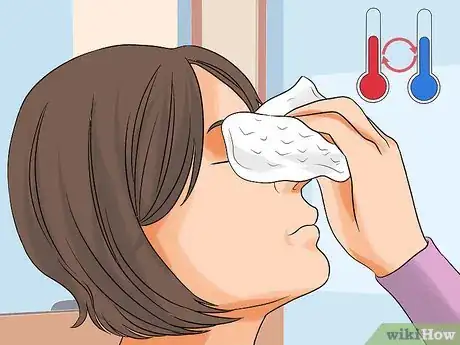




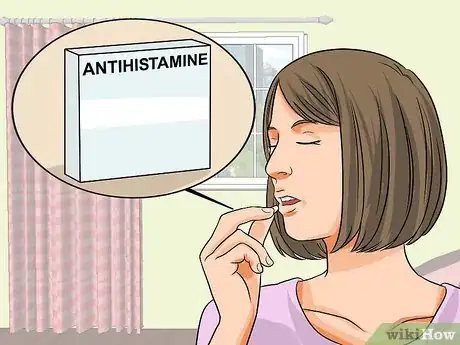

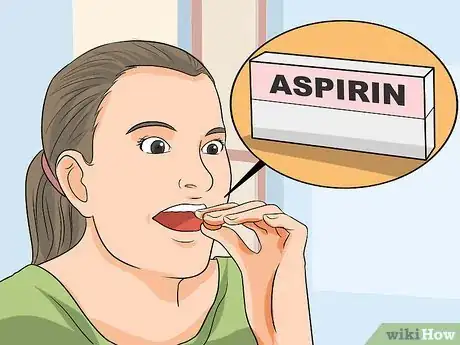
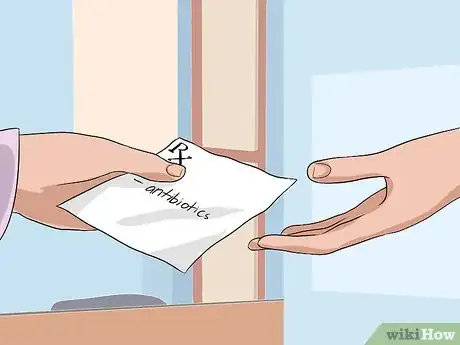



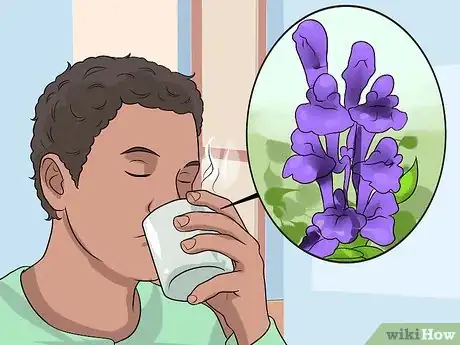
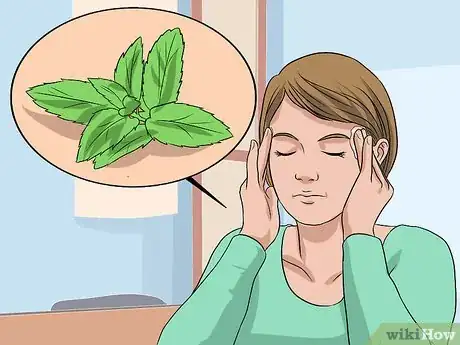

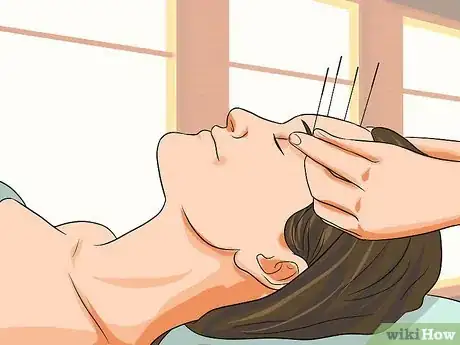

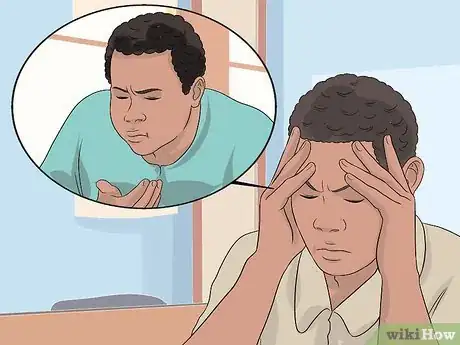

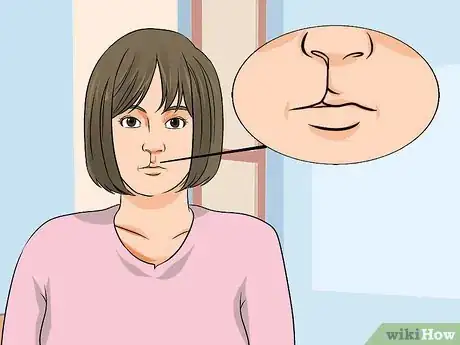




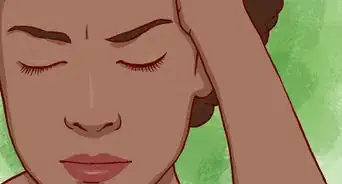
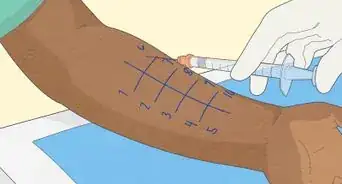



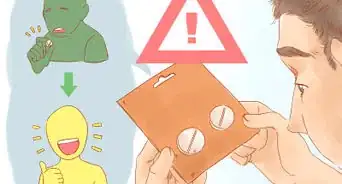
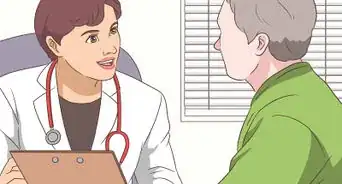
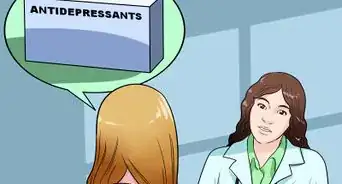
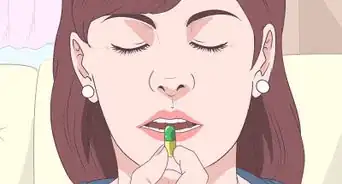
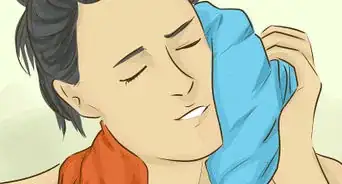

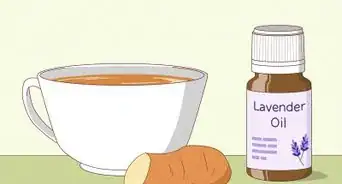















































Medical Disclaimer
The content of this article is not intended to be a substitute for professional medical advice, examination, diagnosis, or treatment. You should always contact your doctor or other qualified healthcare professional before starting, changing, or stopping any kind of health treatment.
Read More...